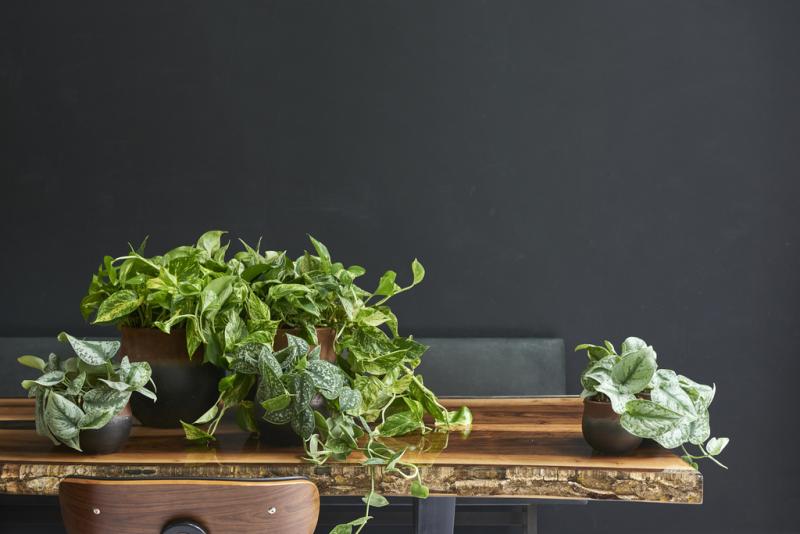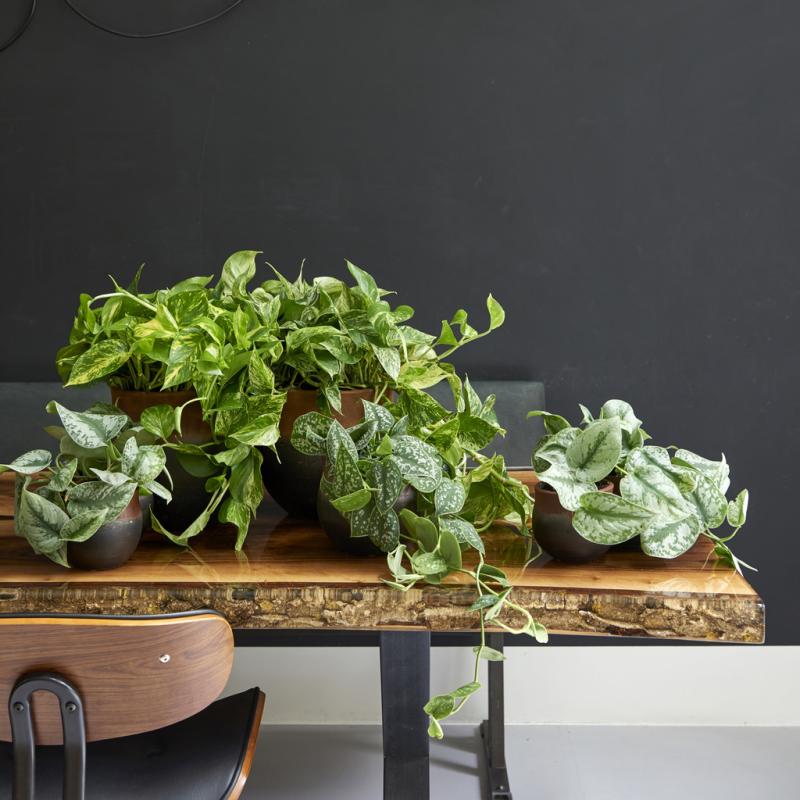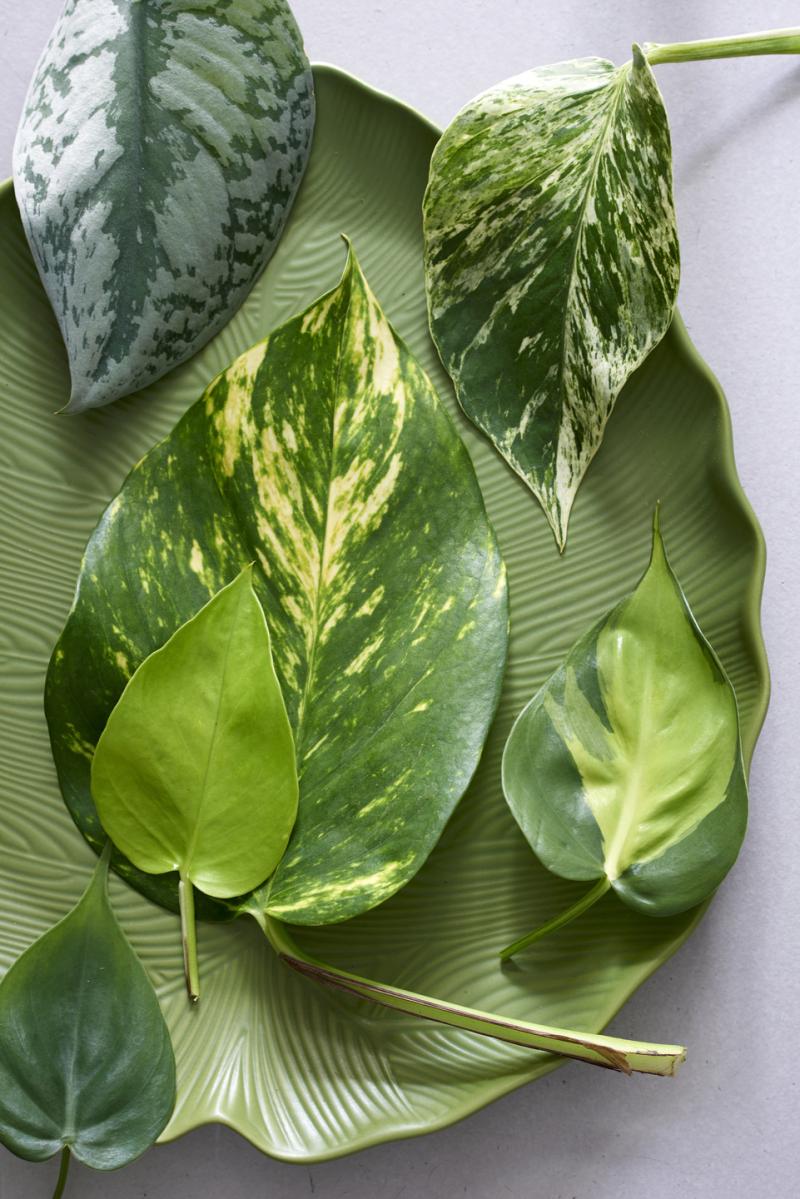August 2018: Devil’s Ivy Houseplant of the month
The story of Devil’s Ivy
Hanging, climbing - Devil’s Ivy, also known as Scindapsus, can grow in all directions. This houseplant stands out thanks to its heart-shaped satiny leaves with silver, pale green, yellow or whitish spots, or a flame pattern. it’s also a reliable companion: if looked after well, this domestic wonder can grow very old and remain beautiful. The plant also gives something back in return for your loving care: according to the NASA Clean Air Study, Devil’s Ivy is one of the plants that helps improve the air quality in your home.
Origin
Devil’s Ivy is a member of the Araceae family and grows in south-east Asia, Indonesia and on the Solomon Islands. In tropical rainforests it prefers to climb up trees.
What to look for when buying Devil’s Ivy
- Devil’s Ivy is sold as a climbing and hanging plant. In both cases it’s important to check that the length and thickness of the plant is in proportion to the form.
- The houseplant should be nice and round on all sides and have an even distribution of leaves. As a hanging plant, the tendrils must be so long that they are already hanging down the side of the pot.
- Brown spots on the leaf indicates too much moisture during shipping and storage.
- The temperature must be at least 12°C or higher during shipping and storage. At lower temperatures Devil’s Ivy should be protected against the cold by being wrapped up.
Range
The Devil’s Ivy range is fairly limited. The best-known form has green leaves with pale green or yellow patterns. ‘Argyraeus’ has small grey spots, ‘Trebie’ has coarser leaves and have more grey marbling. The ‘Silvery Ann’ cultivar has more soft grey in the leaves.

- Devil’s Ivy enjoys a light spot, but preferably not in direct sunlight or a draught.
- The paler the leaves, the more light the plant needs.
- The soil can be moderately damp, but do not have the roots standing in water if possible.
- Some plant food once a month will maintain Devil’s Ivy’s growth.
- The plant loves to be misted with a plant spray.
- If the tendrils grow too long, they can simply be cut back.
Sales and display tips for Devil’s Ivy
Emphasise Devil’s Ivy’s versatility by displaying both hanging and climbing plants. A couple of hanging specimens side by side soon create the illusion of a green curtain or room divider. Replacing the moss pole of the climbing specimens with a more natural looking branch makes the plant trendy and creates a particularly exciting silhouette. Devil’s Ivy is also one of the few houseplants where the tendrils can also be displayed lying down.
Images of Devil’s Ivy
You can download and use the images below free of charge if you credit Thejoyofplants.co.uk.
More information
Instagram: @thejoyofplants
Facebook: thejoyofplants
Twitter: @thejoyofplants
Devil’s Ivy poster
You can download the poster using the link below.









